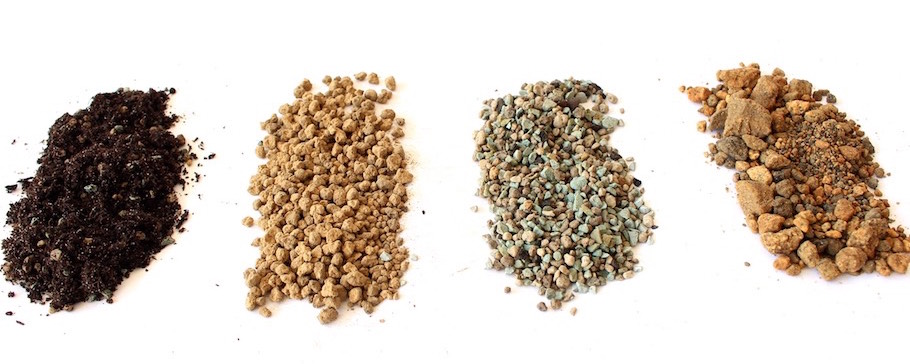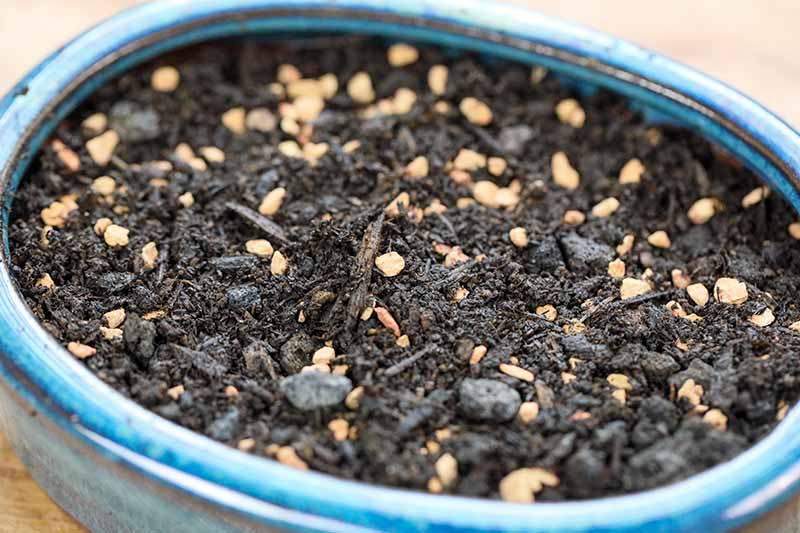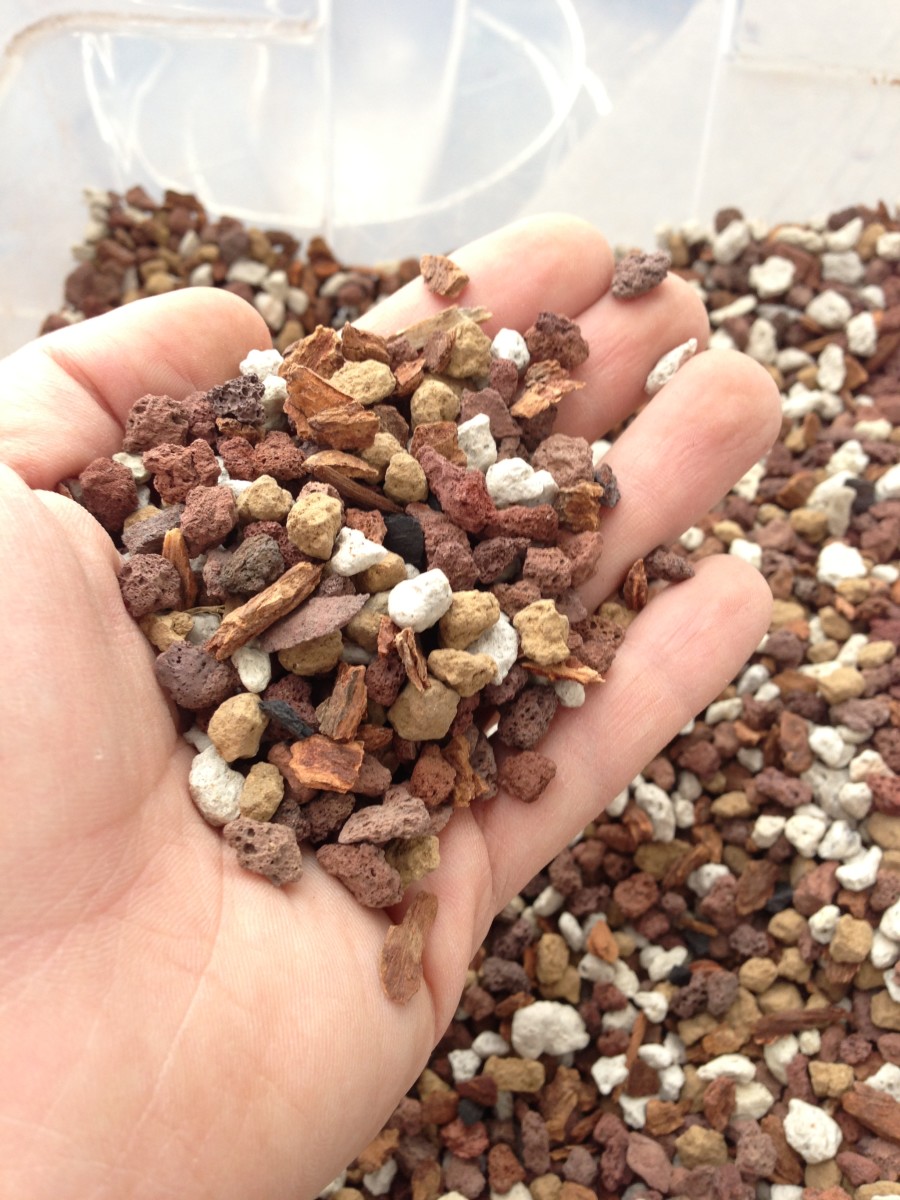In this article, we are going to take a look at the different types of soil and substrates Employed in bonsai cultivation, like natural and organic and inorganic choices.
We will also explore suggested soil mixtures for several bonsai species, including deciduous, coniferous, and indoor versions. From akadama and pumice to moss and river sand, we are going to dive in the fascinating environment of bonsai soil and allow you to understand why It is really a significant A part of cultivating these exquisite trees.

Bonsai soil
What is bonsai soil?
Bonsai soil is a specialized type of soil that is specifically formulated for growing and maintaining bonsai trees. Unlike regular garden soil, bonsai soil is well-draining and provides the necessary nutrients and moisture balance for the tree's root system. The composition of bonsai soil is carefully designed to meet the unique needs of bonsai trees, ensuring their health and longevity.
The importance of bonsai soil
The choice of soil plays a crucial role in the success of your bonsai tree. The right soil provides optimal drainage, allowing excess water to flow freely and preventing root rot. It also promotes a healthy and well-developed root system, which is essential for the overall health and growth of the tree. Bonsai soil retains moisture while allowing air to reach the roots, striking the perfect balance for the tree's needs. Choosing the right bonsai soil is essential for maintaining a healthy and thriving bonsai tree.
Bonsai substrates
What are bonsai substrates?
Bonsai substrates refer to the different materials that can be used to create the ideal soil composition for bonsai trees. These substrates are carefully chosen to meet the specific needs of different species of bonsai trees and to ensure proper water drainage and nutrient availability.
Different types of bonsai substrates
There are various types of bonsai substrates available, each with its own unique characteristics and benefits. Some common bonsai substrates include:
- Organic materials: These include ingredients such as bark, peat moss, and coconut coir. Organic substrates help retain moisture and provide essential nutrients to the bonsai tree.
- Inorganic elements: These contain components like pumice, lava rock, and akadama. Inorganic substrates offer exceptional drainage, ensuring that excess drinking water will not accumulate across the roots of your bonsai tree.
- Soil amendments: These are generally substances which have been additional to your soil mixture to enhance its properties. Samples of soil amendments consist of perlite, vermiculite, and sand. They Enhance the soil's aeration, drinking water-holding capability, and nutrient availability.
By knowledge the different sorts of bonsai substrates and their Houses, it is possible to pick out the most suitable a single on your bonsai tree's wants.
Natural and organic or Inorganic Soils
Organic soils for bonsai
Natural and organic soils for bonsai are composed of organic elements such as bark, peat moss, coconut coir, and compost. These resources offer a prosperous source of nutrients for that bonsai tree and market wholesome root advancement. Natural soils also have superior h2o retention Houses, making sure that the tree receives satisfactory moisture involving watering periods. Even so, it's important to notice that organic soils may perhaps break down as time passes and turn into compacted, leading to very poor drainage and prospective root challenges.
Inorganic soils for bonsai
Inorganic soils for bonsai include products like pumice, lava rock, akadama, and soil amendments like perlite or vermiculite. These components have exceptional drainage properties, stopping waterlogged soil and endorsing aeration within the roots. Inorganic soils are desired by a lot of bonsai fanatics because of their longevity and ability to offer a stable atmosphere with the bonsai tree's root procedure. On the other hand, They could involve more Regular watering and additional fertilization, as they don't maintain as much humidity or nutrients as organic and natural soils.
Pluses and minuses of applying organic and natural and inorganic soils for bonsai
Deciding on in between natural and organic and inorganic soils in your bonsai tree is dependent upon numerous variables, including the unique species of tree, your weather, and personal Tastes. Here's the advantages and disadvantages of every:
Natural soils:
- Pros: Deliver nutrients, very good water retention, endorse healthier root enhancement.
- Disadvantages: May possibly break down eventually, likely for poor drainage Otherwise effectively taken care of.
Inorganic soils:
- Professionals: Excellent drainage, very long-lasting, secure surroundings for roots.
- Cons: A lot less h2o retention, may require more Repeated watering and fertilization.
By contemplating the pros and cons of equally organic and inorganic soils, you can also make an educated determination based on the particular needs of your respective bonsai tree.
Soil components
Essential components of bonsai soil
Bonsai soil is usually composed of 3 major components: grit, natural matter, and clay. These elements do the job jointly to create The best soil structure to the bonsai tree's root system.
- Grit: Grit, including sand or perlite, supplies drainage and aeration inside the soil. It helps stop waterlogging and enables air to get to the roots.
- Organic and natural make a difference: Organic and natural make a difference, for example compost or bark, provides nutrients for the bonsai tree. What's more, it assists retain humidity and Increase the soil's Total construction.
- Clay: Clay particles supply some water retention attributes and assistance bind the soil with each other. Even so, too much clay can cause lousy drainage and compaction.
Role of every soil part
Each individual soil component plays an important position in creating a perfectly-balanced and nutritious surroundings for that bonsai tree's roots.
- Grit: Grit offers the necessary drainage and aeration inside the soil. It helps prevent the roots from sitting down in stagnant water, lowering the chance of root rot and selling All round root wellness.
- Organic and natural matter: Natural issue provides necessary nutrients on the bonsai tree. It aids in moisture retention and contributes to the overall composition of the soil.
- Clay: Clay particles support bind the soil alongside one another and supply some drinking water retention capacity. However, it is important to equilibrium the level of clay to prevent troubles like weak drainage and compaction.
By being familiar with the roles of every soil component, it is possible to make a well balanced bonsai soil mix that fulfills the precise wants of one's tree.

Recommended Bonsai soil mixtures
Common bonsai soil mixtures
There are several common bonsai soil mixtures that have been proven effective for various types of bonsai trees. These mixtures typically consist of a combination of inorganic substrates, organic matter, and soil amendments.
Some of the commonly used bonsai soil mixtures include:
- Akadama, pumice, and lava rock: This mixture is popular among bonsai enthusiasts for its excellent drainage and water retention properties.
- Akadama, lava rock, and organic and natural make any difference: This mixture brings together the key benefits of inorganic substrates Along with the nutrient-abundant Qualities of natural make any difference.
- Pumice, perlite, and bark: This mixture gives excellent drainage and aeration although retaining some dampness and delivering nutrients.
These are generally just some samples of bonsai soil mixtures, and The perfect mixture will depend on the precise needs within your bonsai tree plus your local climate.
Elements to take into account when picking a bonsai soil mixture
When selecting a bonsai soil combination, it's important to contemplate the following components:
- Species of bonsai tree: Different species have diverse dampness and nutrient requirements. Research the specific needs within your tree to choose a soil combination that fulfills its requirements.
- Local weather: The weather you live in can have an effect on the moisture retention Homes of your soil. Evaluate the average humidity and temperature close to you When picking a soil combination.
- Watering habits: Your personal watering patterns and routine must align Using the soil mixture you decide on. Some mixtures involve much more Repeated watering, while some keep dampness for lengthier durations.
- Funds: Some soil parts could possibly be more expensive than Other individuals. Take into account your funds when deciding on a soil combination.
By taking these elements into account, you may choose a bonsai soil mixture that gives the most beneficial expanding conditions for your tree.
Deciduous Bonsai soil
Finest soil composition for deciduous bonsai
Deciduous bonsai trees, which include maple or birch, have precise soil demands to help their expansion and overall health. The ideal soil composition for deciduous bonsai usually includes a mixture of natural matter, inorganic substrates, and soil amendments.
A advisable soil composition for deciduous bonsai may possibly consist of:
- Akadama: Gives fantastic drinking water retention while allowing for for drainage. Furthermore, it releases nutrients slowly eventually.
- Pumice: Promotes aeration and drainage from the soil, blocking waterlogging.
- Bark or peat moss: Provides natural and organic subject to your soil, delivering nutrients and moisture retention.
This soil composition makes certain that the roots of deciduous bonsai trees obtain the appropriate stability of humidity, nutrients, and oxygen for best development.

Coniferous and Pine soil
Ideal soil mixture for coniferous and pine bonsai
Coniferous and pine bonsai trees have click here specific soil requirements due to their water retention needs and preference for acidic soil. An ideal soil mixture for coniferous and pine bonsai should provide good drainage while retaining moisture and maintaining the desired pH level.
A recommended soil mixture for coniferous and pine bonsai may include:
- Akadama: Provides excellent water retention while allowing for sufficient drainage. It releases nutrients slowly over time.
- Pumice: Promotes aeration and drainage in the soil, protecting against waterlogged roots.
- Peat moss: Adds organic issue and acidity towards the soil, creating an ideal pH level for coniferous and pine trees.
This soil mixture makes sure that the roots of coniferous and pine bonsai trees obtain the correct equilibrium of dampness, nutrients, and acidity for his or her precise needs.
Akadama
Exactly what is akadama?
Akadama is often a form of clay soil that is commonly used in bonsai cultivation. It's known for its excellent h2o retention Houses, which make certain a gradual provide of humidity to the bonsai tree's roots. Akadama can be prized for its power to release nutrients slowly and gradually eventually, supplying a regular supply of nourishment for the tree.
Advantages of utilizing akadama in bonsai soil
Using akadama in bonsai soil delivers quite a few Advantages:
- Drinking water retention: Akadama has Remarkable drinking water retention properties, making it possible for it to carry humidity without getting to be waterlogged. This makes certain that the bonsai tree's roots get a continual provide of drinking water, advertising healthier growth.
- Nutrient launch: Akadama gradually releases nutrients to the soil eventually, supplying a steady supply of nourishment for that bonsai tree. This decreases the need for Recurrent fertilization and aids sustain a well balanced nutrient profile.
- Aeration: Even with its drinking water retention capabilities, akadama also offers sufficient aeration on the bonsai tree's roots. It lets air to reach the root procedure, avoiding issues such as root rot as a result of deficiency of oxygen.
By incorporating akadama in the bonsai soil, you could develop an exceptional developing atmosphere on your tree, guaranteeing its wellbeing and vitality.

Lava rock
How lava rock benefits bonsai soil
Lava rock is a popular component in bonsai soil mixtures due to its excellent drainage and aeration properties. It is typically used in conjunction with other substrates to create the ideal soil composition for bonsai trees.
The benefits of lava rock in bonsai soil include:
- Drainage: Lava rock provides excellent drainage, preventing waterlogging and ensuring that excess water flows freely through the soil. This helps prevent root rot and provides a healthy environment for the roots to thrive.
- Aeration: The porous mother nature of lava rock allows air to circulate within the soil, offering oxygen for the bonsai tree's root process. Good aeration is essential for wholesome root advancement and All round tree progress.
- Longevity: Lava rock can be a resilient content that does not stop working effortlessly. This makes certain that the soil construction stays stable after some time, cutting down the necessity for Repeated soil replacements.
Lava rock is offered in numerous sizes and styles, enabling for customization according to the precise needs of your bonsai tree and soil requirements.
Differing kinds of lava rock
There are actually differing kinds of lava rock that could be Utilized in bonsai soil mixtures, together with:
- Black lava rock: Black lava rock is a commonly employed materials in bonsai soil mixtures. It provides excellent drainage Attributes and provides an aesthetic factor to the overall presentation on the bonsai tree.
- Red lava rock: Crimson lava rock is yet another well-liked option in bonsai soil mixtures. It offers very similar drainage and aeration Positive aspects as black lava rock but has a definite reddish shade that adds visual fascination for the container.
The two black and purple lava rocks are extensively offered and may be effortlessly incorporated into your bonsai soil combination.
Potting
Crucial strategies for effective bonsai potting
Potting is usually a important method in bonsai cultivation, as it instantly impacts the health and growth in the tree's roots. Here are several critical tricks for thriving bonsai potting:
- Pick the proper pot size: Pick out a bonsai pot that permits for root growth though however furnishing a snug fit. Stay clear of pots which might be as well significant, because they can lead to abnormal soil moisture and very poor root advancement.
- Use bonsai wire: Secure the tree from the pot making use of bonsai wire to ensure steadiness. This helps prevent the tree from shifting or turning out to be uprooted during watering or solid winds.
- Trim and spread the roots: In advance of potting the bonsai tree, very carefully trim and distribute out the roots. This encourages outward growth and helps prevent root tangling or root-bound issues.
- Increase mesh screens: Place mesh screens over the drainage holes at the bottom in the pot to stop soil erosion and ensure proper drainage.
- Use refreshing bonsai soil: When potting, usually use contemporary bonsai soil to provide the required nutrients and exceptional developing disorders for your roots.
By pursuing these vital recommendations, you'll be able to be certain a successful potting course of action and promote the overall health and fitness and development of your respective bonsai tree.
The role of bonsai pots in soil dampness Management
Bonsai pots Participate in a vital job in soil moisture Management, directly impacting the wellness and expansion of the tree. Bonsai pots are usually shallow and possess drainage holes, allowing extra water to escape and blocking the soil from turning out to be waterlogged.
The look of bonsai pots encourages evaporation and air circulation, which assists regulate soil dampness concentrations. The shallow depth and broad opening on the pot expose extra surface location on the soil to the air, aiding in humidity evaporation. This stops the roots from sitting down in excessively damp soil, reducing the risk of root rot and also other h2o-related concerns.
Moreover, the drainage holes in bonsai pots allow for any excess water to escape, stopping waterlogged soil and endorsing aeration around the roots. Appropriate aeration is essential for the wellbeing and enhancement of the root method, making certain the bonsai tree gets the required oxygen for expansion.
By making use of bonsai pots made for effective moisture Handle, you may build a positive environment for the bonsai tree's roots and advertise its All round overall health and vitality.
In summary, picking out the more info suitable bonsai soil is significant for the achievements and wellness of one's bonsai tree. Understanding the differing types of bonsai substrates, the part of organic and inorganic soils, The crucial element factors of bonsai soil, and the various encouraged soil mixtures will assist you to deliver the exceptional escalating conditions for your bonsai tree. Regardless of whether you have a deciduous or coniferous bonsai, incorporating resources like akadama and lava rock can greatly enhance the soil's drainage and nutrient availability. On top of that, taking note of potting procedures and using bonsai pots made for humidity Regulate will even further aid the flourishing advancement of your bonsai tree. With proper knowing and implementation of bonsai soil tactics, you are able to benefit from the attractiveness and artistry of bonsai cultivation For many years to come.
